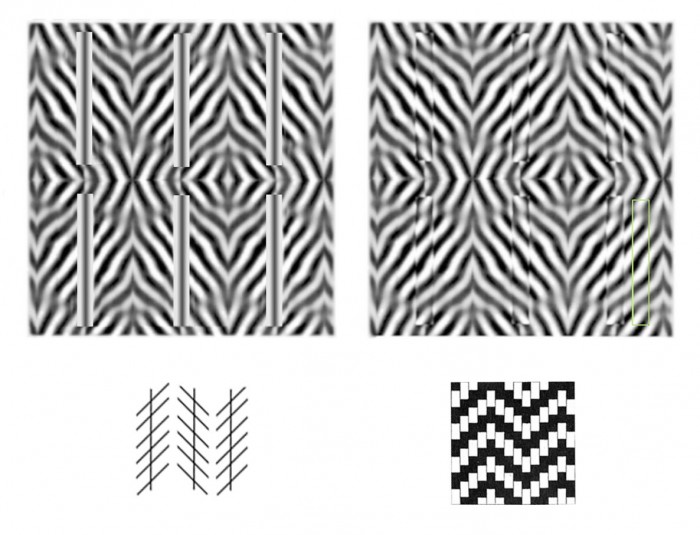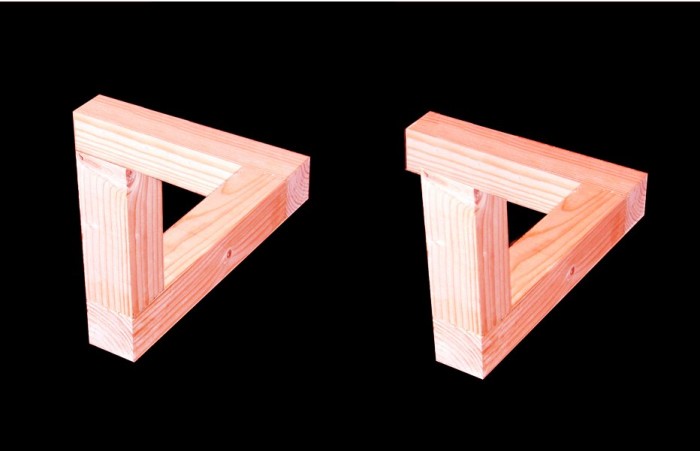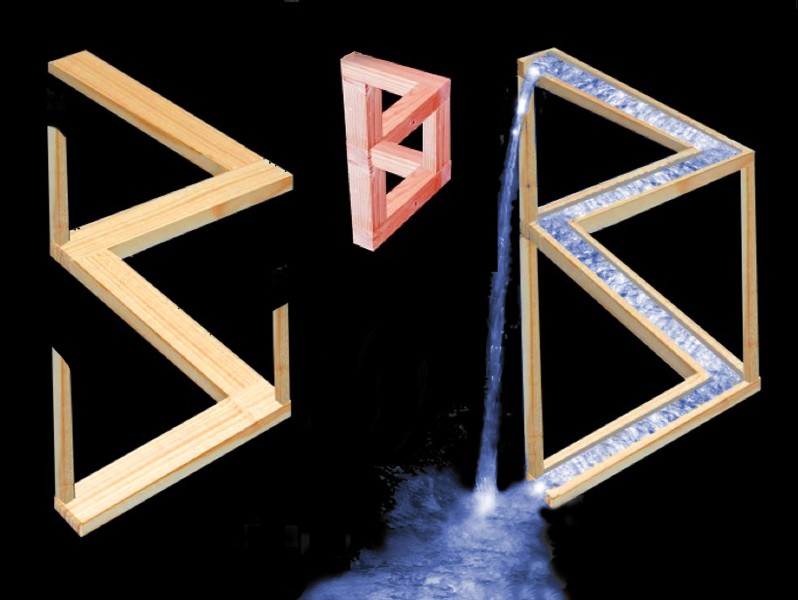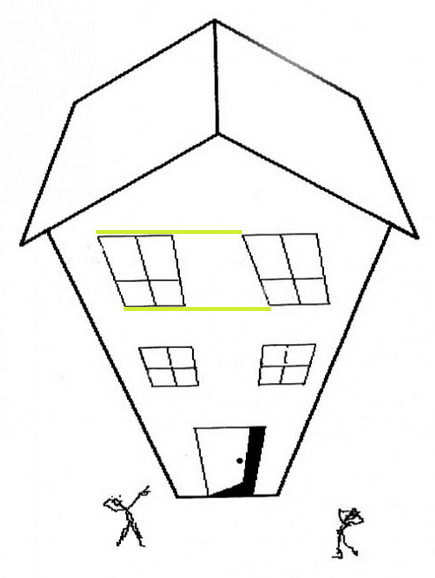For years I’ve wished someone would make an animated cartoon in which the events depend on the kind of visual transformations we see in many illusion pictures. It won’t be easy. Salvador Dali loved effects of these kinds, and helped sketch out a scheme for a Disney movie (though not one with a real storyline) in 1945/6. It’s called Destino. It didn’t get made, until Disney’s nephew Roy Disney made a version in about 2000. I don’t think it was so successful, but it was a fascinating chance to see what works, and what is less successful when animated. Take a look at a trailer and decide,
http://www.youtube.com/watch?v=iO1ghQFSXro
I reckon Goo-Shun Wang’s wonderful, recent animation of a character trapped on an Escher-style, never-ending staircase is far more successful:
http://www.moillusions.com/2007/04/halluciis-problem-illusion-video.html
To explore the kind of effects I think might work in a narrative, I devised a couple of still-picture cartoon stories. Here’s a pair of frames from one you can view on the www, in which the characters are almost trapped on another never-ending staircase, when a spiral stair suddenly transforms:
Check out the whole thing at:
it also includes loads of hints on drawing illusion pictures.





